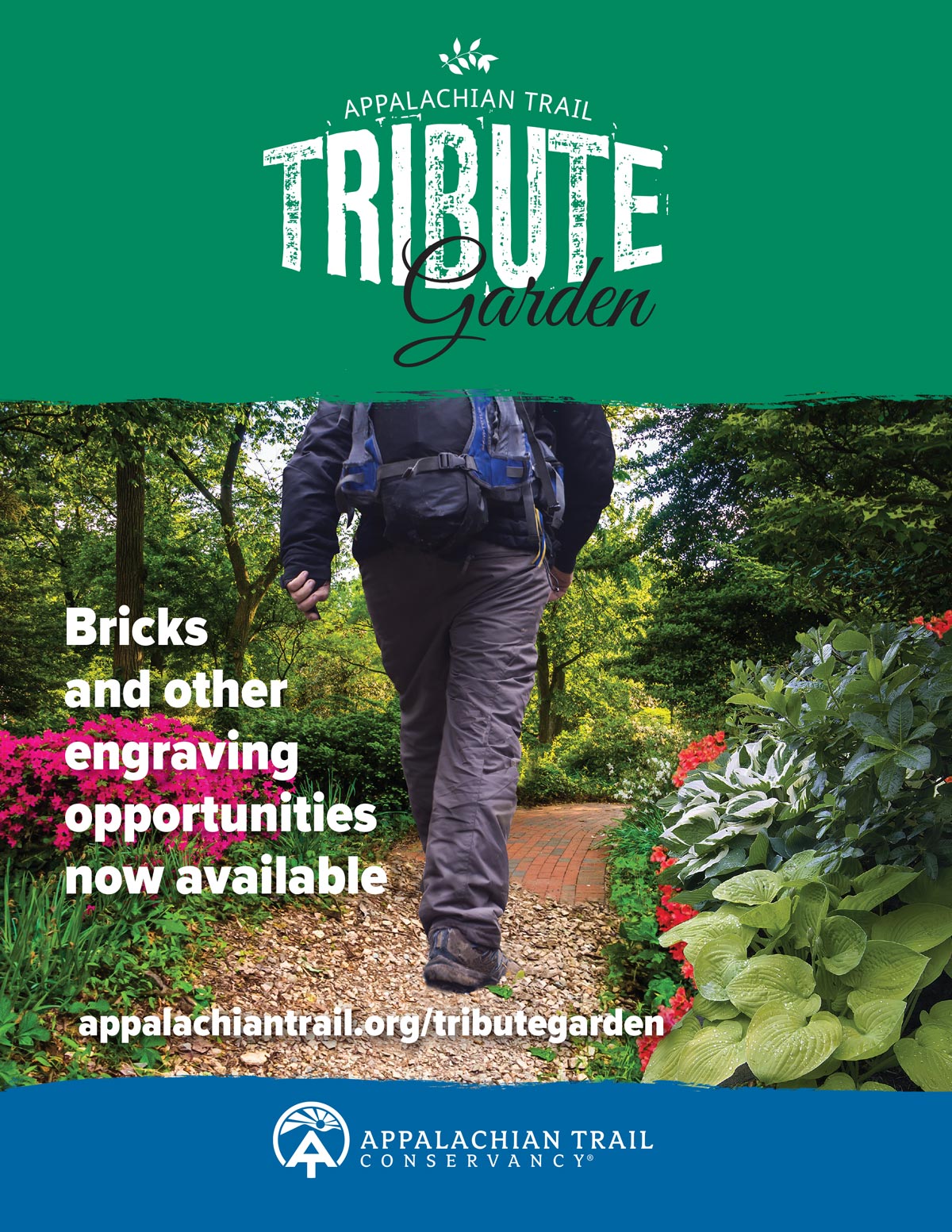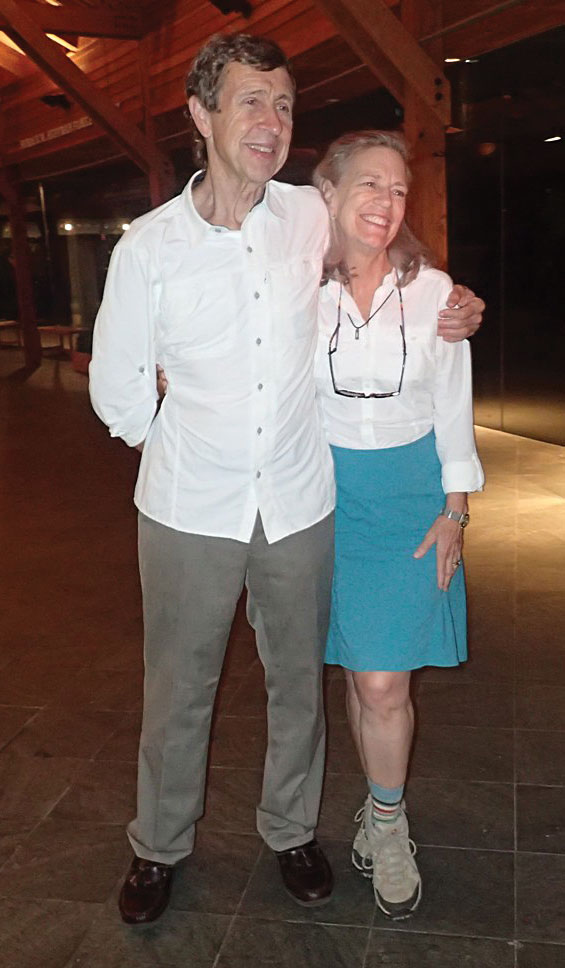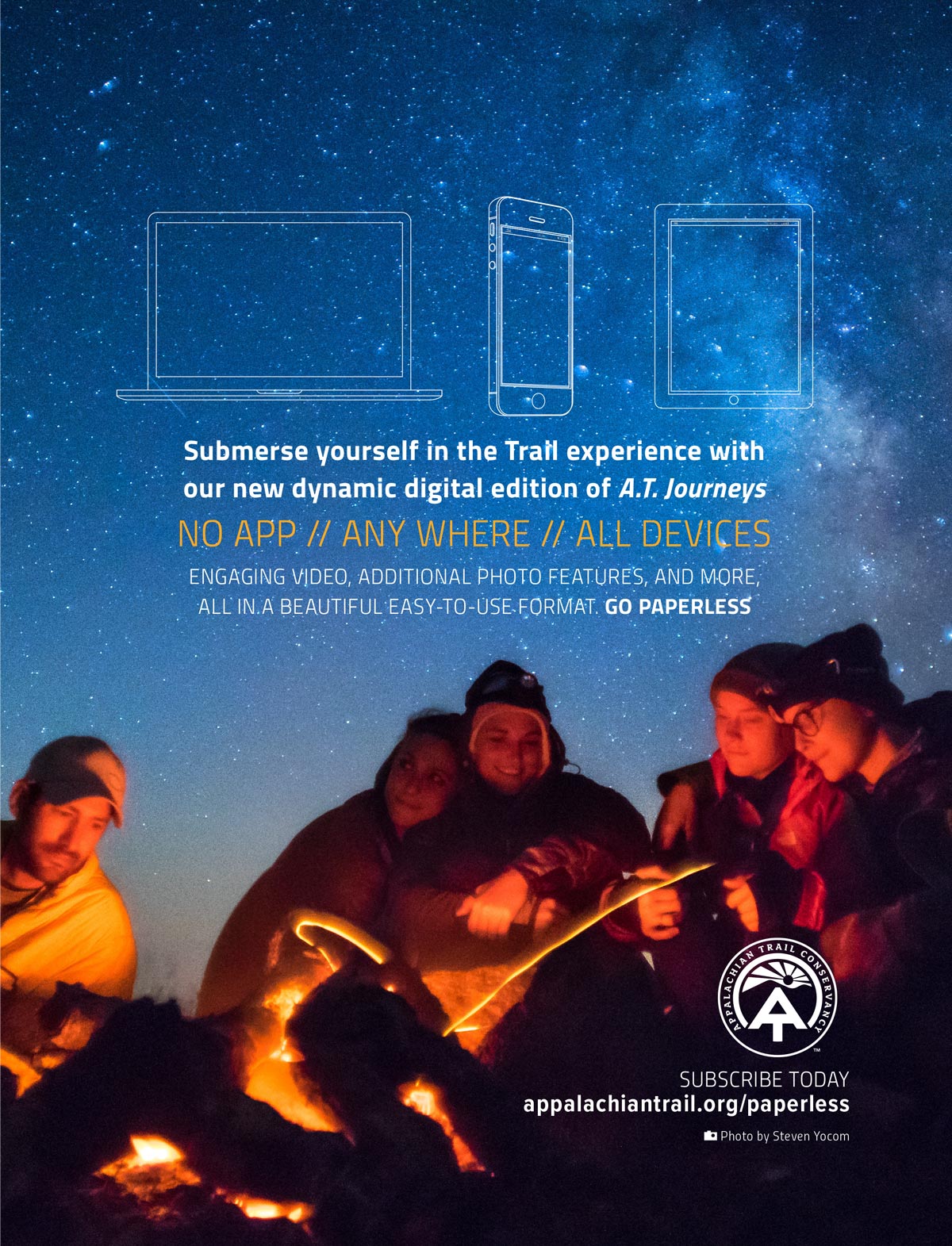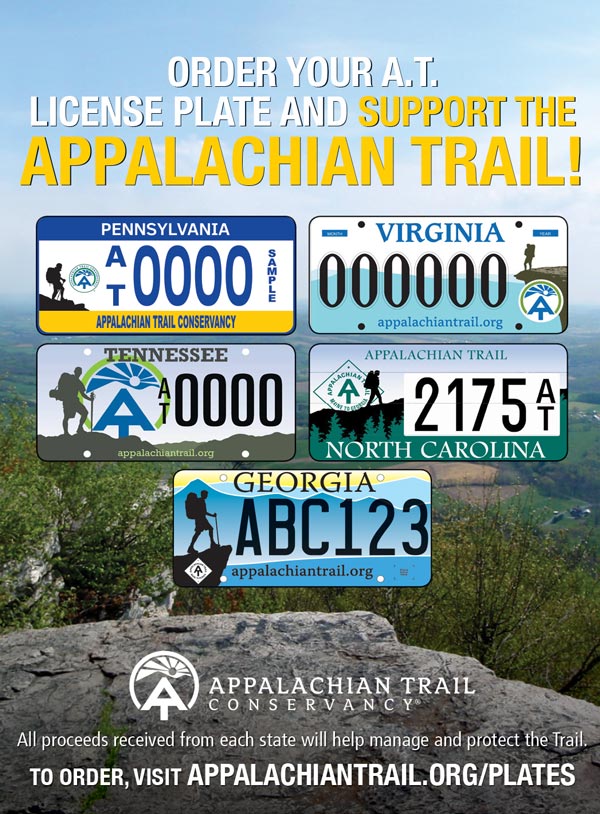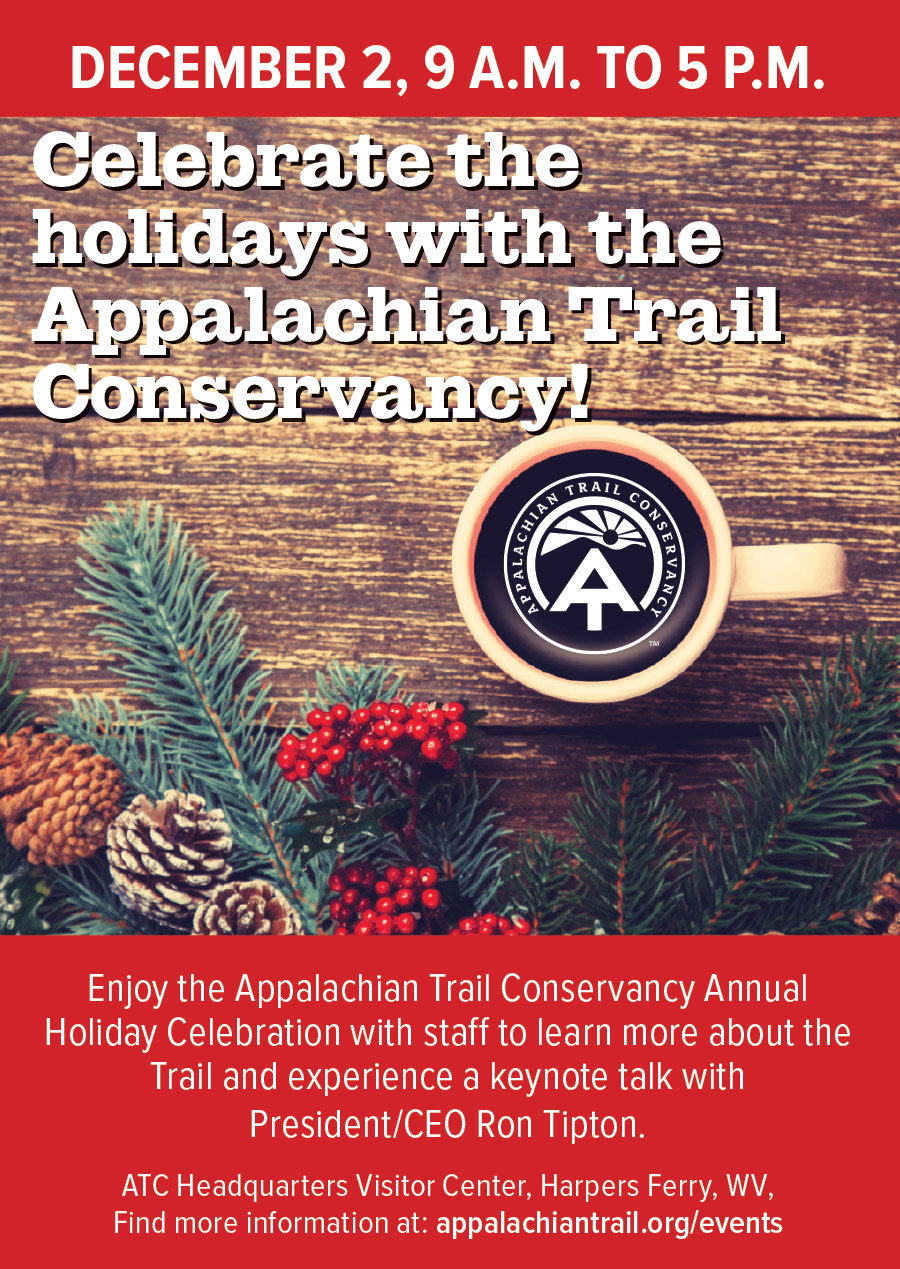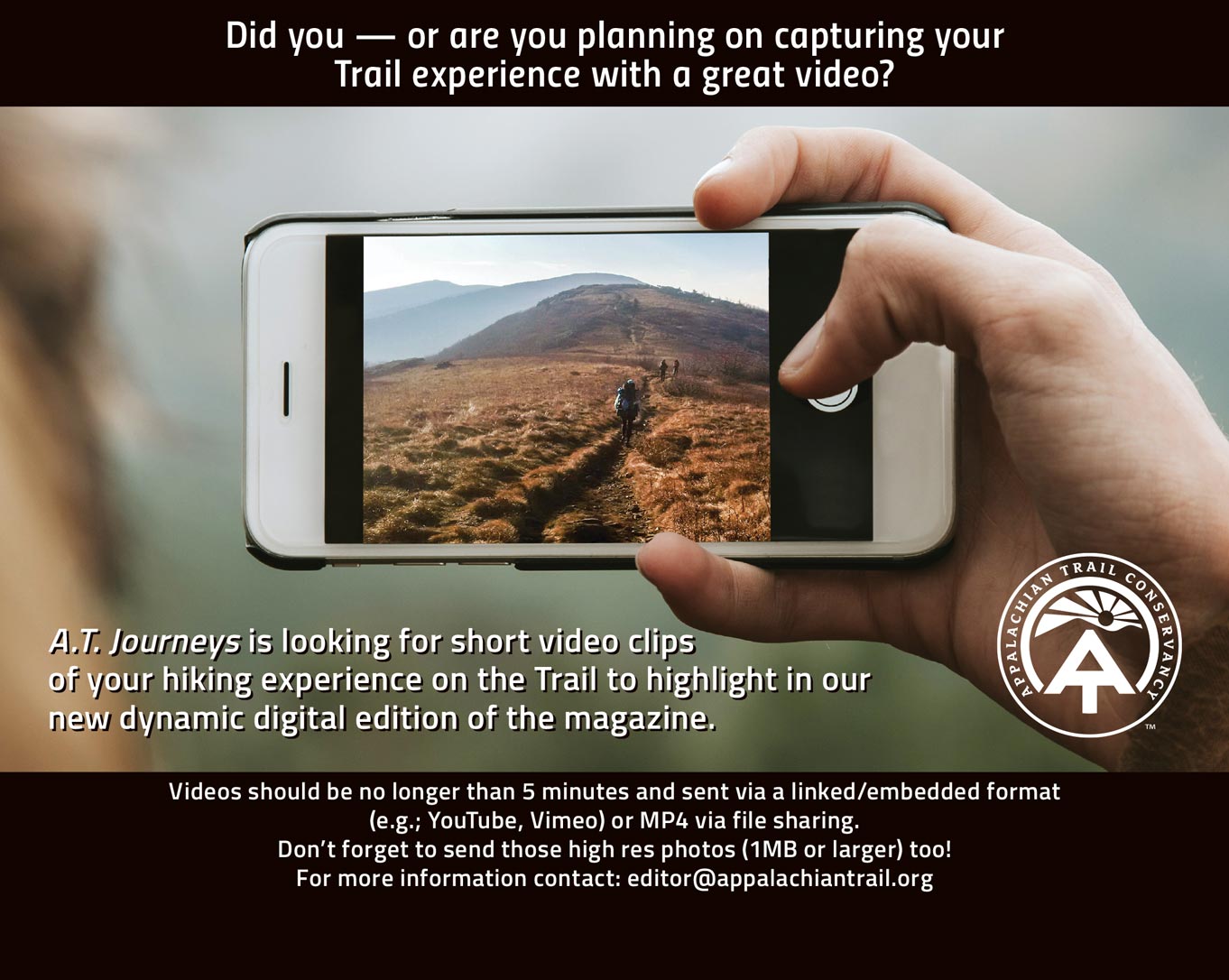

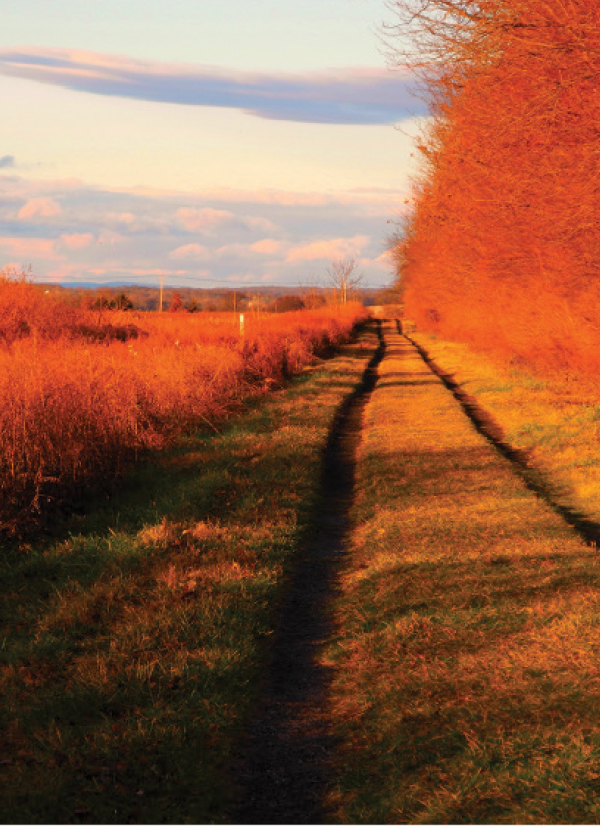
A.T. – Wallkill National Wildlife Refuge, New Jersey
Ronald J. Tipton / President & CEO
Stacey J. Marshall / Vice President of Finance & Administration
Tiffany Lawrence / Vice President of Membership & Development
Laura Belleville / Vice President of Conservation & Trail Programs
Brian B. King / Publisher
Javier Folgar / Director of Marketing & Communications
Wendy K. Probst / Managing Editor
Traci Anfuso-Young / Graphic Designer
Laurie Potteiger / Information Services Manager
Brittany Jennings / Proofreader
Sandra Marra / Chair
Greg Winchester / Vice Chair
Elizabeth (Betsy) Pierce Thompson / Secretary
Mary Higley / Treasurer
Colin Beasley
Beth Critton
Shalin Desai
Norman P. Findley
Edward R. Guyot
Daniel A. Howe
Robert Hutchinson
Colleen Peterson
Jennifer Pharr Davis
Rubén Rosales
Nathaniel Stoddard
Hon. C. Stewart Verdery, Jr. / Chair
Shooter Starr / Vice Chair
Donald Ayer
Sonja Carlborg
Kathi Cramer
Constance I. DuHamel
Lisa Koteen Gerchick
Destry Jarvis
Jessica Herrera-Flanigan
R. Michael Leonard
Robert Rich
Sara Hazelwood Yanes
For membership questions or to become a member, call: (304) 885-0460
![]()
[email protected]
A.T. Journeys is published four times per year. Advertising revenues directly support the publication and production of the magazine, and help meet Appalachian Trail Conservancy objectives. For more information and advertising rates, visit: appalachiantrail.org/atjadvertising
Observations, conclusions, opinions, and product endorsements expressed in A.T. Journeys are those of the authors and do not necessarily reflect those of members of the board or staff of the Appalachian Trail Conservancy.
A.T. Journeys is published on Somerset matte paper manufactured by Sappi North America mills and distributors that follow responsible forestry practices. It is printed with Soy Seal certified ink in the U.S.A. by Sheridan NH in Hanover, New Hampshire.
A.T. Journeys ( ISSN 1556-2751) is published quarterly for $15 a year by the Appalachian Trail Conservancy, 799 Washington Street, Harpers Ferry, WV 25425, (304) 535-6331. Bulk-rate postage paid at Harpers Ferry, West Virginia, and other offices. Postmaster: Send change-of-address Form 3575 to A.T. Journeys, P.O. Box 807, Harpers Ferry, WV 25425.

attended the Appalachian Trail Conservancy (ATC) Biennial at Colby College in Waterville, Maine in August. More than 800 ATC and Trail club members, volunteer leaders, government and non-profit partners, and outdoor recreation industry representatives came together for this unique event — the largest regular gathering of hikers in this country and maybe anywhere. We were motivated, inspired, and entertained in the many workshops, meetings, hikes, excursions, and entertainment events. The more than 250 volunteers from the Maine Appalachian Trail Club and the Appalachian Mountain Club were outstanding hosts for the Biennial.
The first ATC general meeting was held in Washington, D.C., in 1928, three years after our founding meeting. My initial Biennial experience was in Shepherdstown, West Virginia, in 1977, when this event reverted to every two years after 35 years of longer stretches between gatherings.
Over the years, the ATC Biennial has offered many different experiences to the A.T. community. It has been a forum for great debates on Trail management and protection and a place for the Trail clubs, government partners, and ATC staff to come together in an informal setting. Many important strategies and decisions and inspiring discussions about the future of the Trail experience happened at Biennial business meetings, as well as in informal conversations. We charted the progress every two years toward the ultimate goal of a completely publicly owned and permanently protected A.T. corridor.
There are several reasons. First, the ATC is now required, by a recent change in the laws governing non-profits incorporated in Washington, D.C., to have a meeting of its members every year. Secondly, organizing each Biennial is a hugely challenging and time consuming two-year project for both the host Trail clubs and ATC staff. It is also increasingly difficult to find a venue for each Biennial. And there is a great deal of uncertainty and considerable financial risk in staging an event of this size.
A working group representing A.T. clubs and chaired by former ATC Board member Marcia Fairweather has spent the past two years looking at future options for the Biennial. They have recommended a new approach called A.T. Vista to begin in 2020 and happen every two years thereafter. The Vista is envisioned as a four-day event that includes hikes, workshops, excursions, and fun and will be organized by some combination of Trail clubs and local partners. The New York/New Jersey Trail Conference has agreed to take the lead on planning the 2020 Vista.
At the same time, the ATC will begin in 2018 to host an annual meeting open to all of our members. This will be a one-day event in or near a major metropolitan area and will include feature speakers, discussion of important Trail issues, and a town hall forum. The first ATC Membership meeting will be held next August in Shepherdstown, West Virginia.
This is clearly a major change from the traditional Biennial. We hope and expect A.T. Vista and the ATC Membership meeting to combine the best elements of the Biennial format and offer some new and different experiences for the A.T. community.
Summit Seekers gather at a September event at Anacostia Park in Maryland.
![]() Photo by Julie Judkins
Photo by Julie Judkins

article about Percival Baxter and Myron Avery (“Of Men and Mountains,” Summer 2017). I too am a graduate of Bowdoin College, and had the pleasure of visiting Maine’s greatest mountain in the ’60s and ’70s. Bowdoin’s Outing Club had the responsibility of maintaining a section of the A.T. back in those days. The highlight of our year was always an October trip up to Baxter State Park, just before things closed down for the winter. Until reading this article, I had no idea that Avery was also a Bowdoin graduate. And I was not aware that Governor Baxter lived until 1969. One year later, I was living in a large “frat house” on the Bowdoin campus. Years later, I learned that it had been built by the Baxter family. Bowdoin subsequently renamed it Baxter House, and it still stands today. The Baxters were very philanthropic. Without Governor Baxter’s land donation, the A.T. would have ended much farther south.
Eric Weis Wayne
reading “Practical Magic” (Summer 2017).You see for the last 22 years I have been doing Trail magic for thru-hikers. I had no idea that it was frowned upon. For the first 19 years I was set up in a parking lot in a nearly waterless section of New York (the Elk Pen in Harriman State Park). I gave away soda, water, candy bars, stove fuel, fruit, and a few other goodies. Over the years, I also brought chairs and since I worked for an outdoor retailer I managed to bring donated hiker food — I was also able to give away a free pair of socks to each [hiker] that came by. And in recent years, I have recharged many a phone. Even though I left no garbage, took garbage from the [hikers], and often picked up the garbage from the area I was parked, I did concentrate a few hikers in one area. I thought the only trace I left was the happy faces of the hikers I helped. I only started doing it because, on a long section hike, I received so much help, water, beer, pizza and more that I decided to give back. So I am sorry I have apparently contributed to the degradation of the A.T. experience.
Roger “Tentman” Williamson
important message I must share with you all is about change. We are changing how we will gather, with the 2017 Maine Membership Meeting being the last of one we will hold following our traditional format. We are changing the leadership of the Appalachian Trail Conservancy as we move forward with our search for a new president/CEO. The volunteers, I think, feel we are often changing the way we want them to do their jobs. We are changing (or maybe for the first time creating) rules for our hikers. Our partners, in dealing with their own changes, require us to adapt as well.
I’ve been spending some time recently refreshing myself with the history of the A.T. I’ve found many of Benton MacKaye’s statements and reasons for envisioning the Trail are possibly even more applicable to the world we live in today than the one that existed in 1921. But I also have been thinking about Myron Avery. While MacKaye spoke of the wilderness utopia, Avery went to work to build an actual trail for “tramping, camping, and outdoor recreation.” MacKaye and Avery — visionary versus realist; architect versus builder. We needed both aspects to create this treasure and I believe we still need both to take care of it now and for the future.
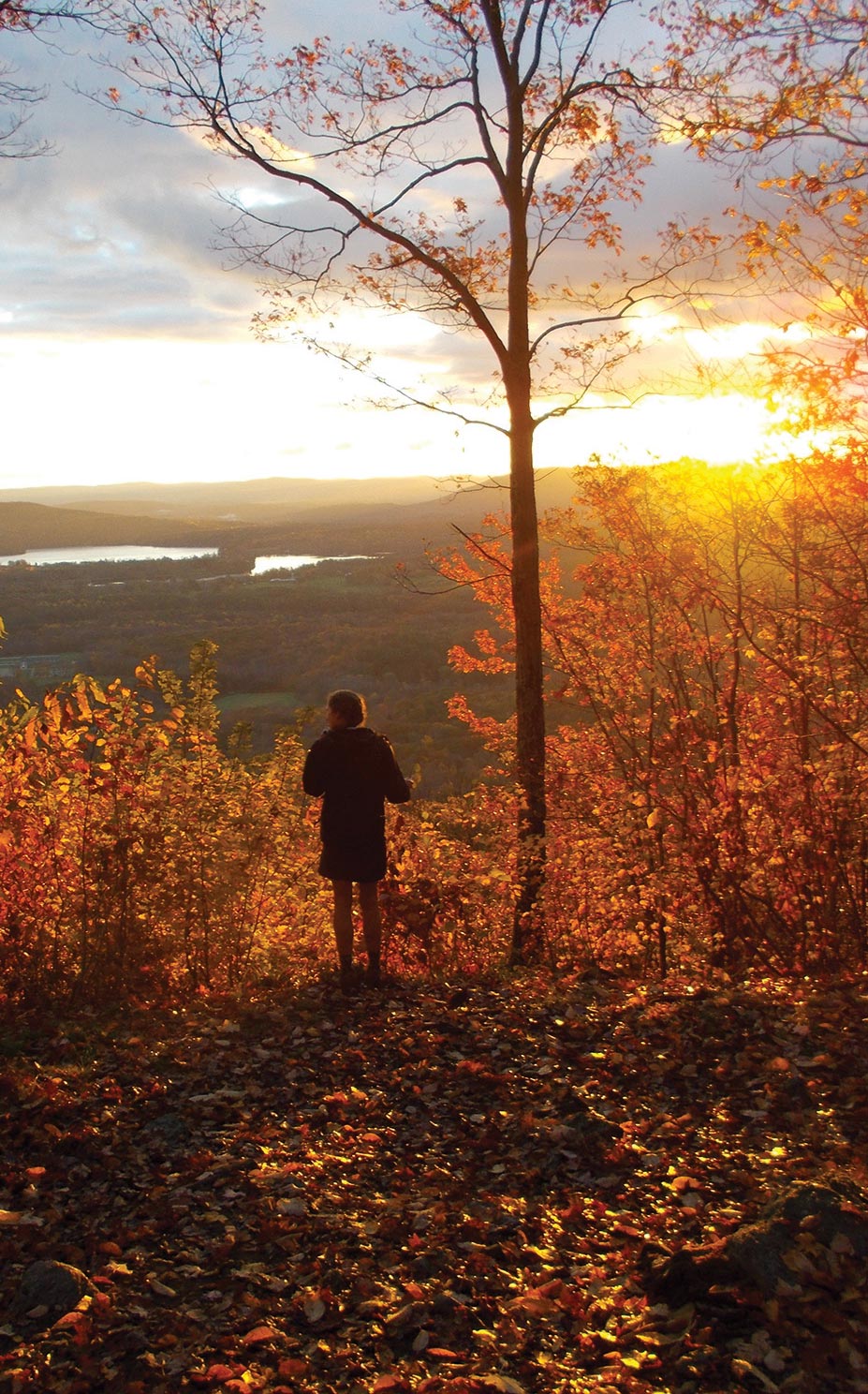
I’ve said that the Trail never changes — but changes absolutely those who walk it. For those of us who are entrusted with its care and protection, we must embrace both our visionary and our realist sides. We must hold fast to our past and work together to move into the future, adapting and changing when needed — always with what is best for the Trail in our hearts.


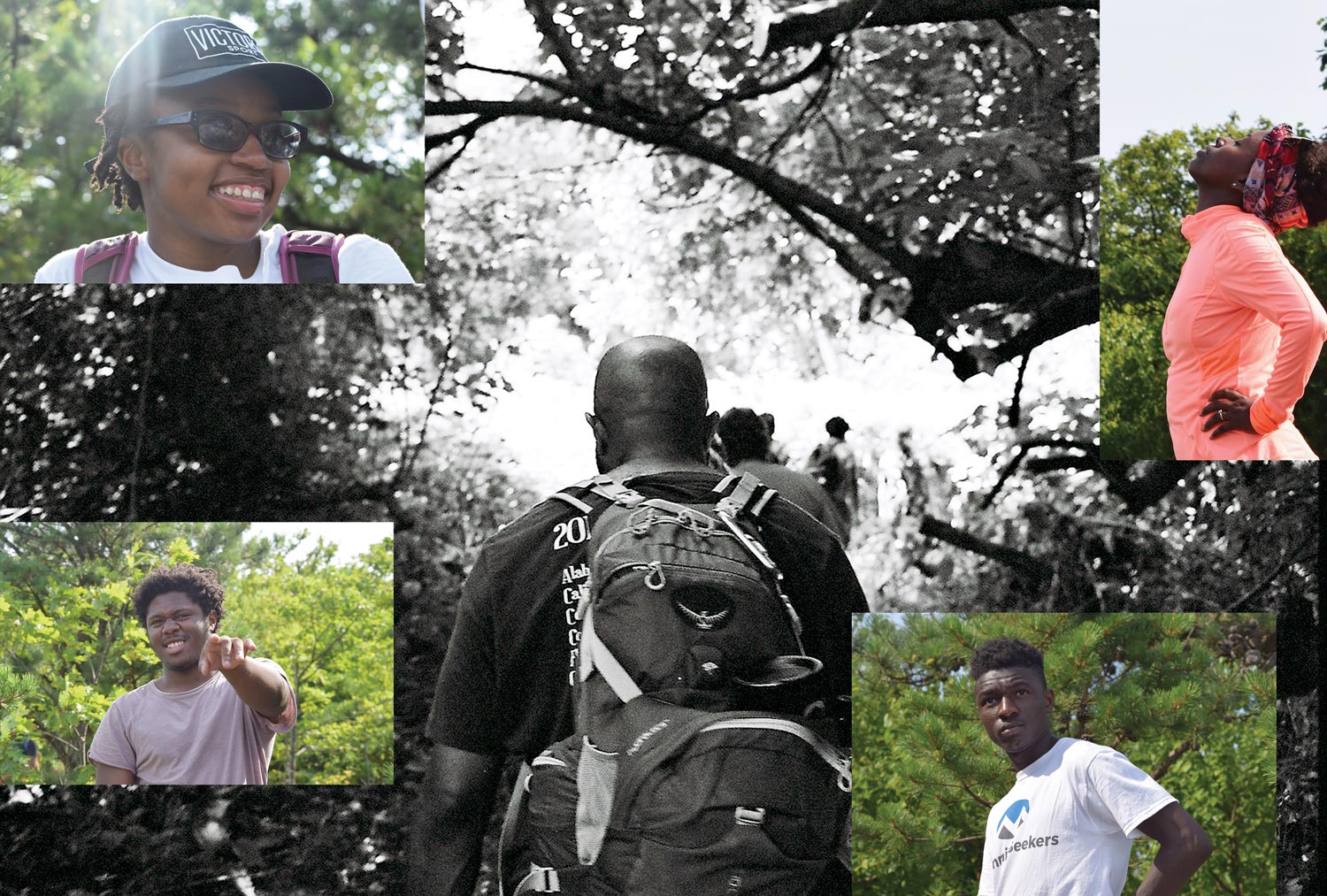
Center: The group takes a hike at the first Summit Seeker event in Anacostia
Among us were people from many walks and ethnicities, Black, Hispanic, Asian, Queer…most of us identified as “other” than what might be considered the norm on the Trail, tacitly defined by whiteness, affluence, or hetero-sexuality. Are these race, class, and gender definitions relevant to a bunch of folks who just want to get outdoors? Summit Seekers found this initial ice breaker exercise one of several ways we built a shared knowledge, experience, and sense of reality.



Twenty-eight years ago, when the ATC had a handful of staff, Susan Daniels joined the crew to help with the growing amount of administrative assignments. As her early supervisor noted: “Hiring Sue was one of the best decisions I made.” Many, many staff and volunteers couldn’t agree more. With Susan’s retirement from her position as conservation coordinator, the ATC will say a fond and deeply appreciative farewell to an unassuming, dedicated, prolific contributor to the success of our organization and the stewardship of the Trail.
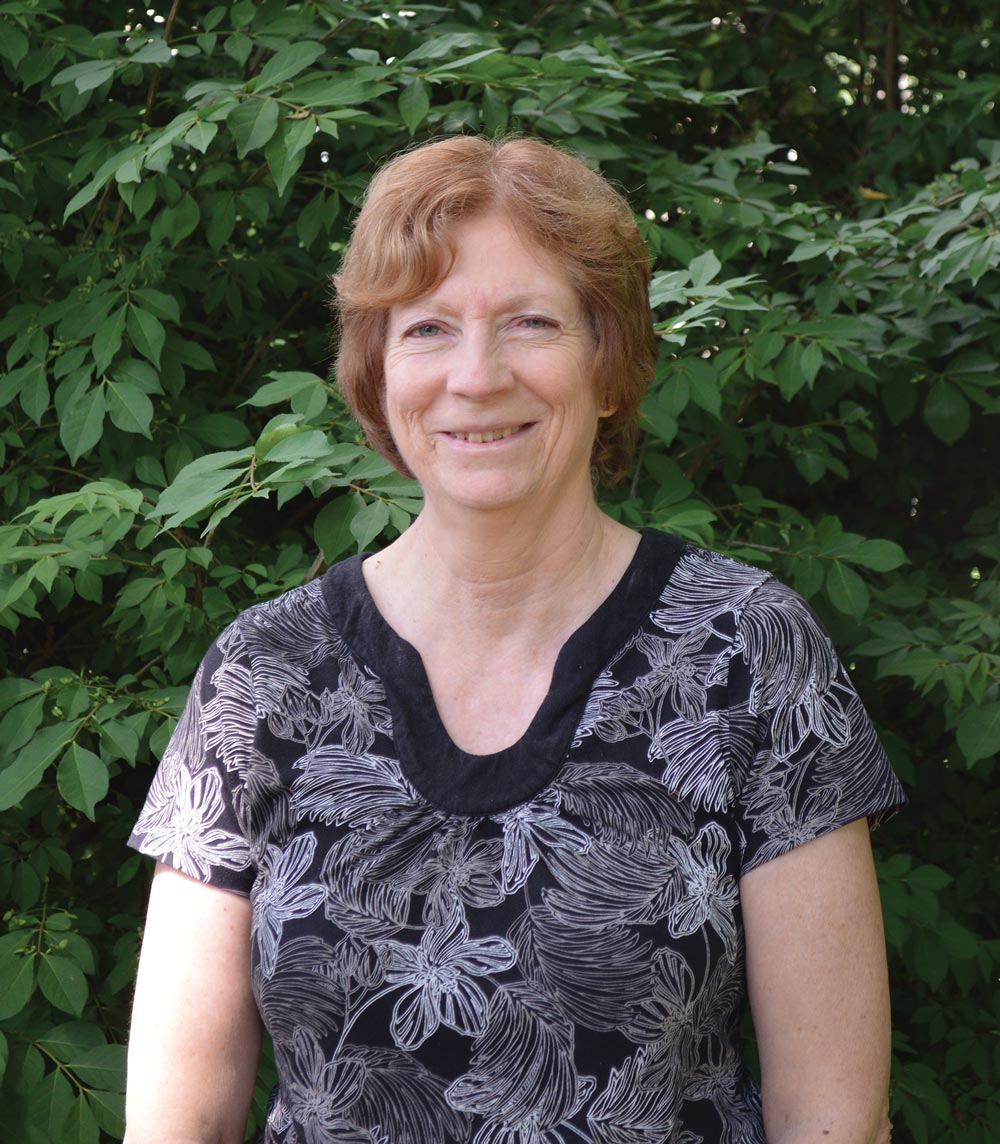

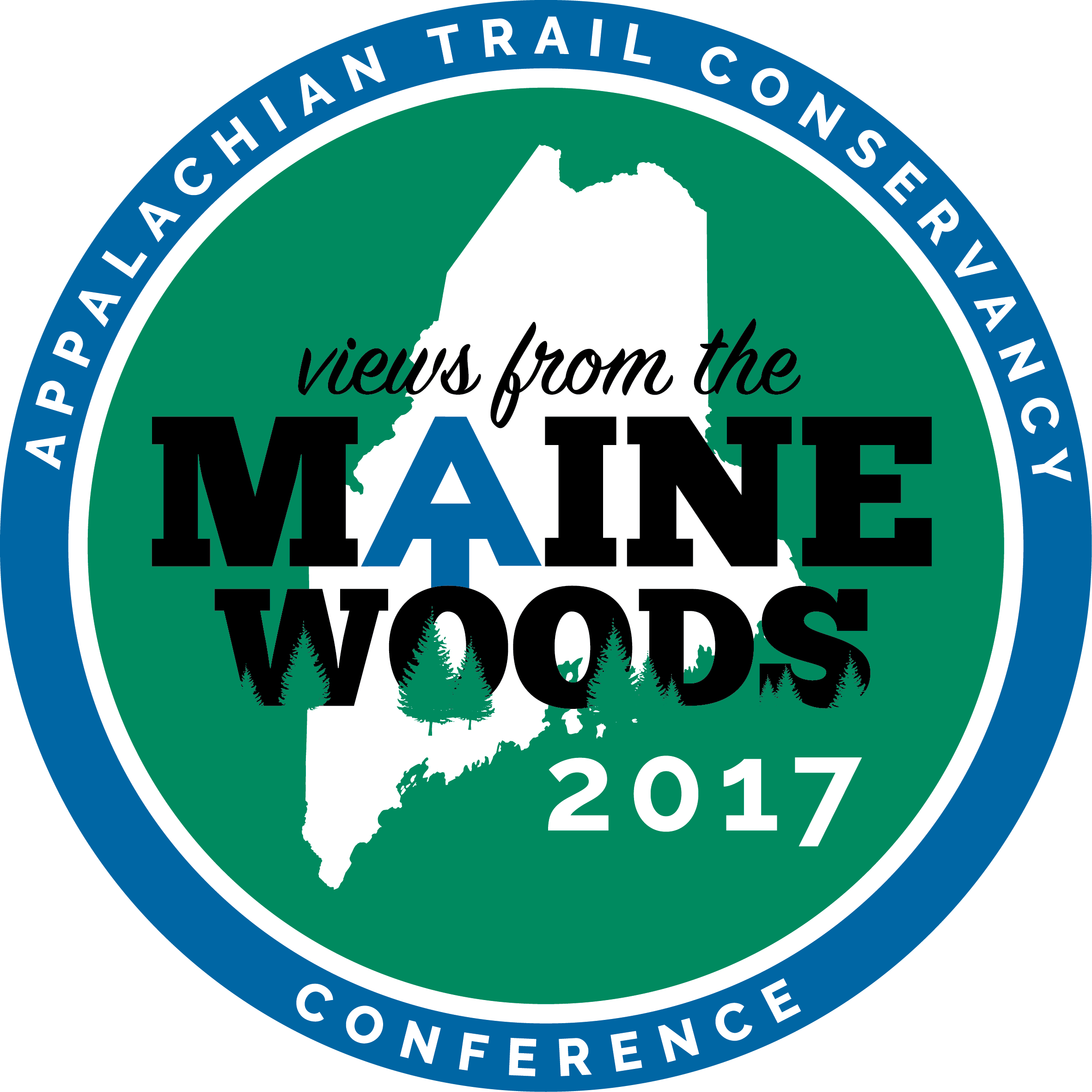

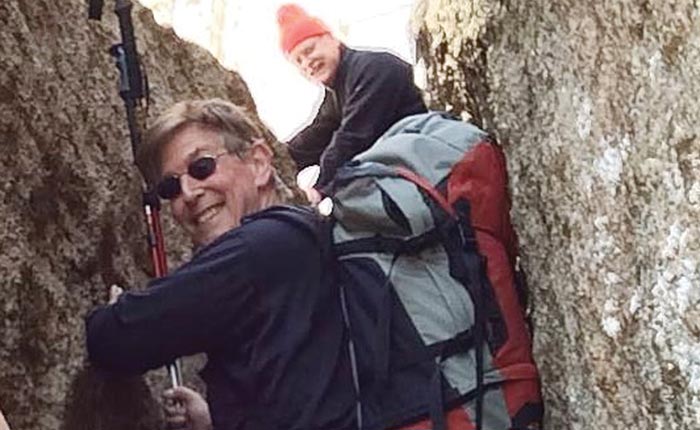
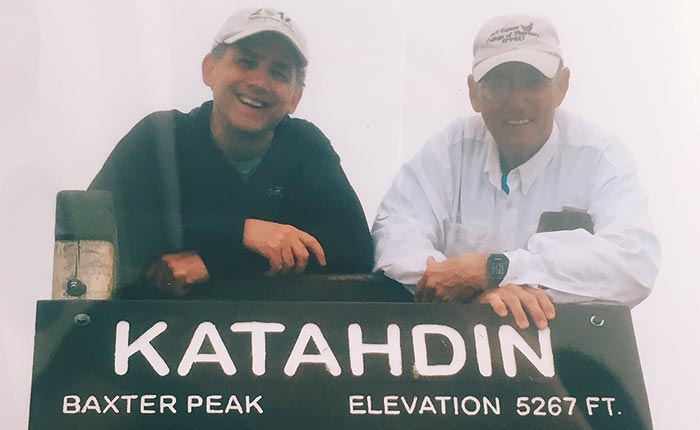
Both Congressmen are experienced A.T. hikers. A longtime section hiker, Congressman Beyer recently completed the A.T.’s rugged and challenging treadway through the White Mountains in New Hampshire. And Congressman Roe frequently hikes the A.T. for its beauty and as part of his physical conditioning to summit one or two 14,000-foot mountaintops each year in the western United States.
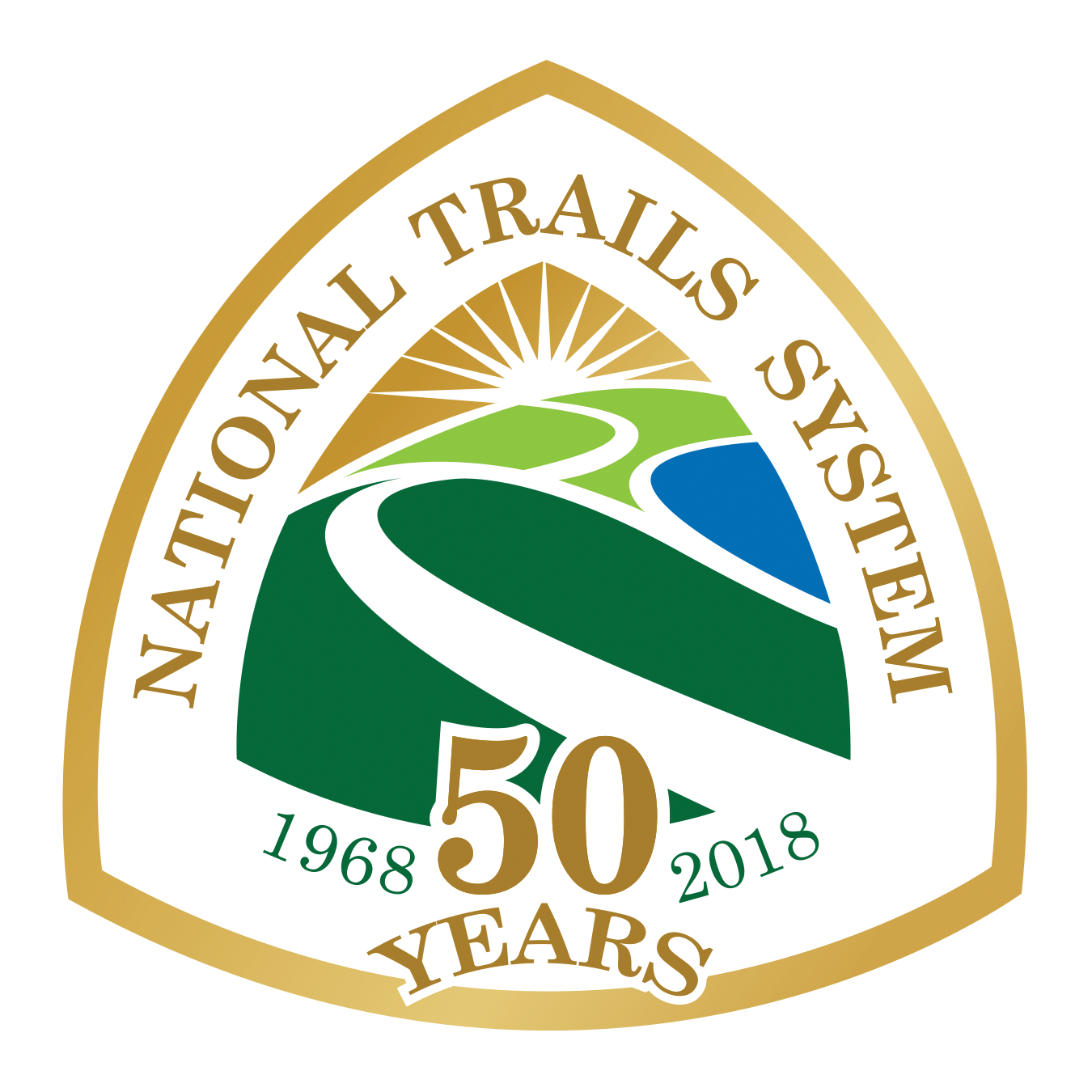



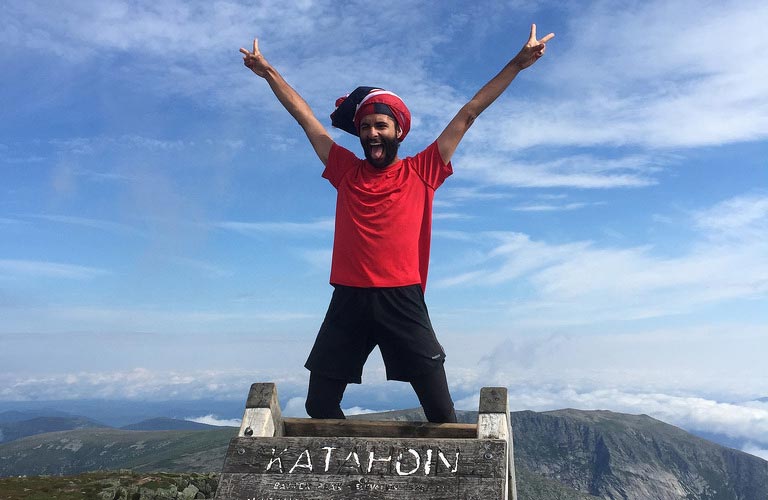
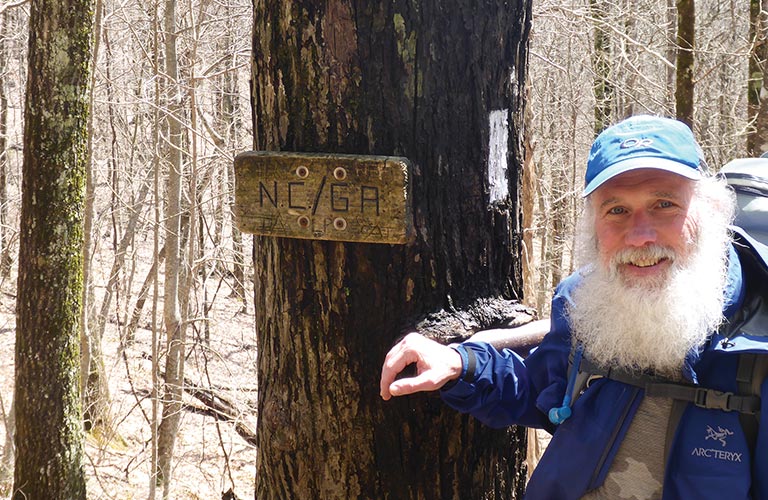
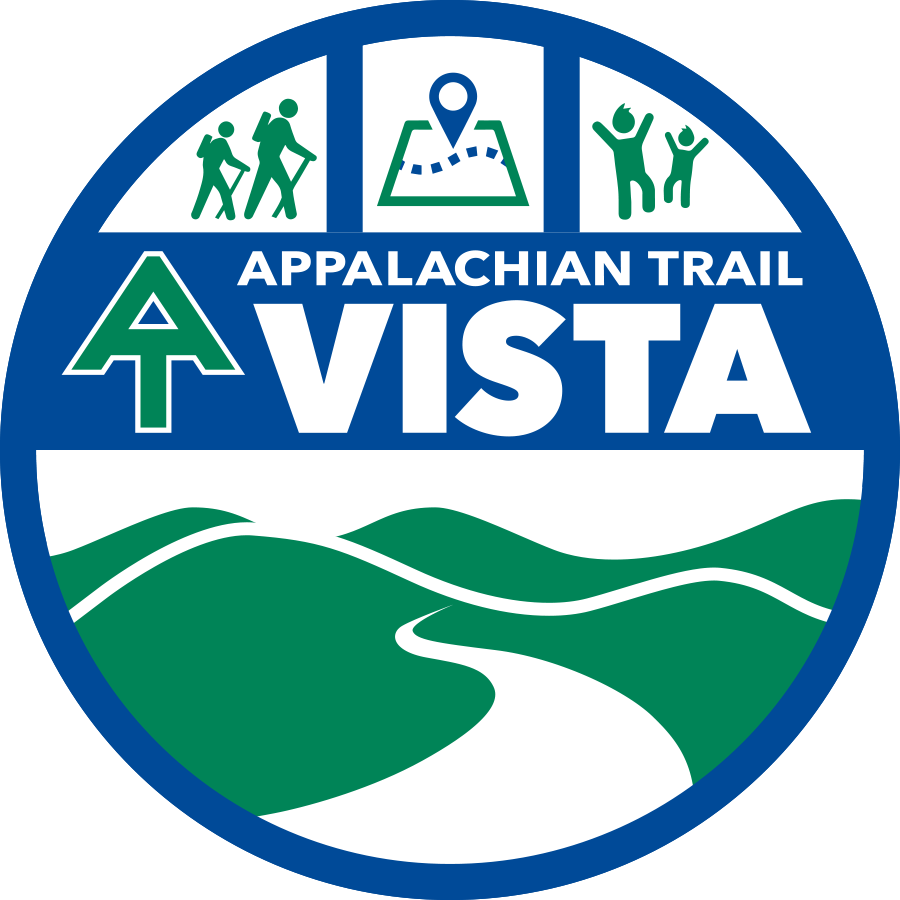
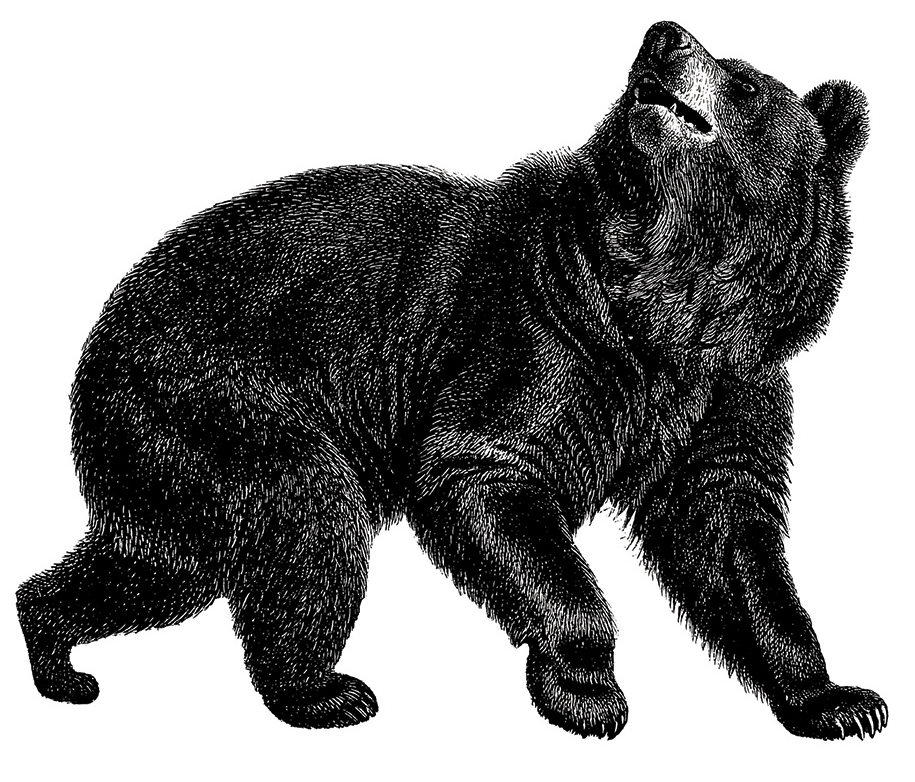
Please check the Trail Updates page on the ATC’s website. The ATC recommends canisters approved by the partners of SierraWild, a joint U.S. Forest Service, National Park Service, and BLM program to manage multiple wilderness areas in the Sierras.
- Consult a current official A.T. map to learn which agencies own and regulate the land
- Know local hunting seasons
- Wear a blaze-orange hat, clothing, or gear visible from 360 degrees
- Avoid deer firearm season (usually October through January) by hiking in one of these national parks: C & O Canal National Historical Park, Maryland; Harpers Ferry National Historical Park, West Virginia; Shenandoah National Park, Virginia; Blue Ridge Parkway, Virginia; Great Smoky Mountains National Park, Tennessee and North Carolina





landscape partnership approach that helps preserve the essence of the A.T. experience — its view shed, access to the Trail, and the vitality of communities along it — there is no better place to examine than Maine’s North Woods. “Cooperating with multiple partners to preserve large landscapes is the future of protecting the Trail experience,” says the Appalachian Trail Conservancy’s (ATC) president and CEO Ron Tipton. “This of course is not limited to Maine, but all the way to Georgia too.” He explains that this isn’t about protecting the footpath, which is already protected. It’s about the larger landscape. “When you’re looking at a really large area with the potential to protect thousands of acres it will almost always involve working with numerous private and public partners,” he says. “It will never be the ATC by ourselves.”


 southbound thru-hikers make their way down the Appalachian Mountain chain this fall, few may be aware that their efforts are joined — and dwarfed — by a medium-size hawk weighing less than a pound. Dr. Laurie Goodrich at Pennsylvania’s Hawk Mountain Sanctuary has launched a multi-year research project that has yielded fascinating data about this species that depends on the very same large landscape that Appalachian Trail Conservancy (ATC) and our conservation partners are diligently working to protect.
southbound thru-hikers make their way down the Appalachian Mountain chain this fall, few may be aware that their efforts are joined — and dwarfed — by a medium-size hawk weighing less than a pound. Dr. Laurie Goodrich at Pennsylvania’s Hawk Mountain Sanctuary has launched a multi-year research project that has yielded fascinating data about this species that depends on the very same large landscape that Appalachian Trail Conservancy (ATC) and our conservation partners are diligently working to protect.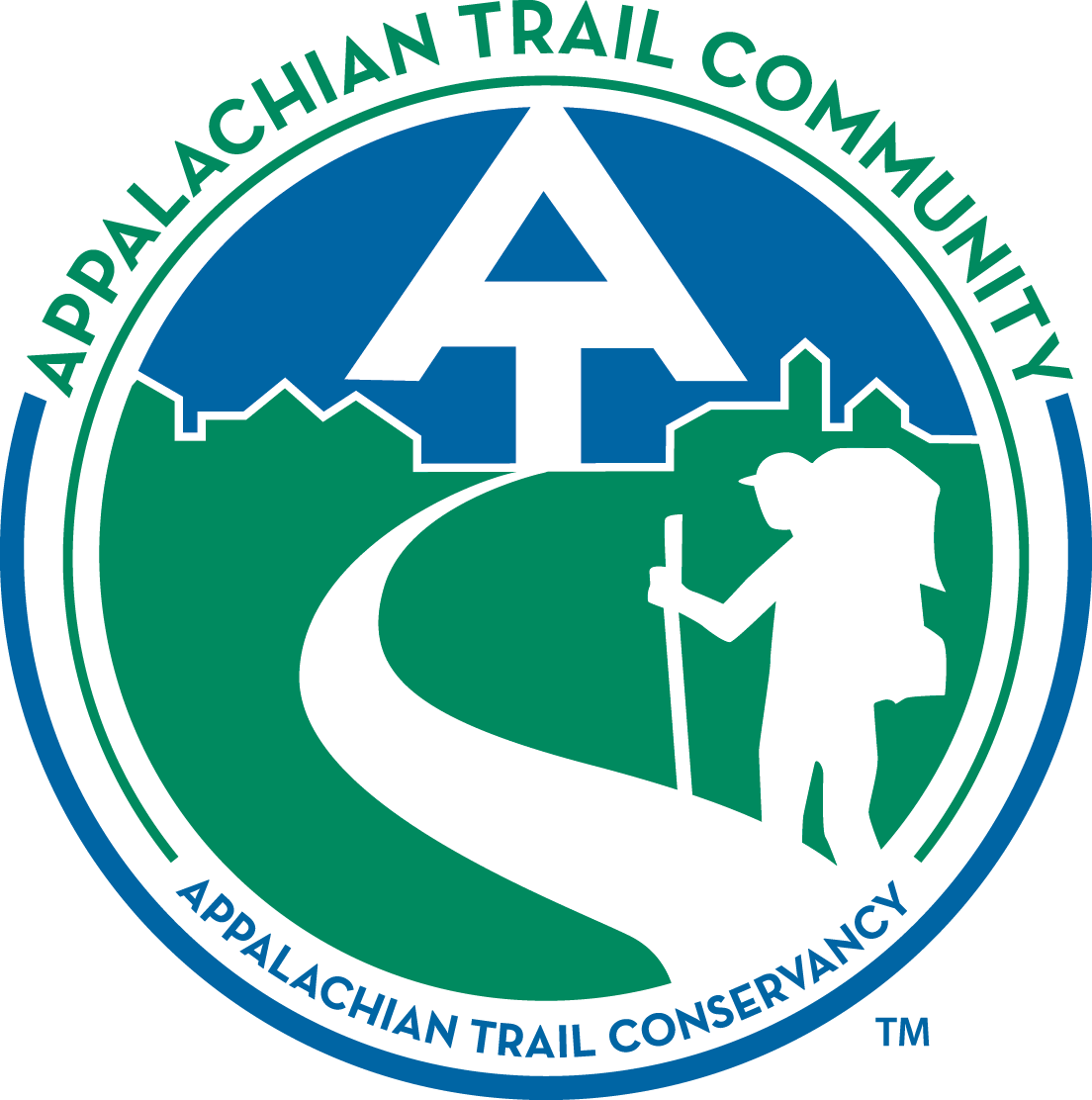
The A.T. runs through Mount Rogers and directly through Damascus — which is surrounded by many other outdoor recreational trails and spaces.
![]() Photo by Stephen Outten
Photo by Stephen Outten
many hikers who venture out: a walk in the woods, a lab for discovery, a vehicle for conservation, a connecting thread for communities. The new Appalachian Trail Center in Damascus, Virginia, will likewise meet many needs.
The approximately 2,500-square-foot building slated for completion in 2019 is a collaborative project with the Appalachian Trail Conservancy (ATC), the Town of Damascus, and the Southwest Virginia Cultural Heritage Foundation. The project represents a significant investment in an ongoing effort to expand economic opportunities through outdoor recreation across Southwest Virginia.
The center will support visitor information, exhibits, details about neighboring trails and assets, and training seminars for a range of groups including volunteers who help maintain the A.T. Programming and design will commence this fall. The facility, when completed, is also likely to assist the work of known recreational and conservation partners in the region along with adding new collaborators to the mix.
The official entrance to the 2017 Jamboree where the ATC was featured as an event sponsor alongside organizations such as Leave No Trace, the National Park Service, and the U.S. Forest Service
in partnership
as Scouting or apple pie. These iconic fixtures in the United States, Scouting and the A.T., have a long overlapping history, where many young people gain their first introduction to the outdoors — where the beauty, challenge, and rewards are found in the exercise, strengthened friendships, and scenery of the endeavor.
The Trail has often served as the destination for Boy Scouts within a day’s drive, with ambitions of ticking off a 50-mile backpack, to hike to a scenic spot they heard about, or to be among the volunteers who have the audacity to build and maintain this long-distance Trail so that others can come to confirm, “yes, this Trail can lead me all the way to Maine, or the other direction, to Georgia.”
To that end, the A.T. captured the imagination of two Eagle Scouts, Randy Wright and Charlie Timberlake, who set out in 2011 to hike following their respective college graduations. Meeting at age six through Scouts and being exposed to backpacking through Troop 304 in Atlanta, their connection to Scouting is so deep that even as 29-year-olds with no children of their own in Scouting, they have returned as assistant Scout Masters with an emphasis in backpacking.
During his hike, Alex met thru, section, and day-hikers and found that there is a wonderful camaraderie present among all of the hikers he came across. “It is as though they share a common understanding between themselves that they are each out here because they choose to be,” he says. “They share a mutual affinity for being outdoors and getting away from the stresses of everyday life. Friendships seem to flourish on the Trail — an element that I find extremely compelling in this backpacking community.” Alex hopes to get back on the Trail someday soon so he can continue to document some of the people, places, and things that inspire him the most.
Lookout tower on the summit of Mount Cammerer in the Smokies (half a mile off the Trail) — built as a fire watch tower in the 1930s and manned by a fire ranger for 30 years

Scott with his dog Bleu at his home in North Carolina
childhood filled with the joys of summer camp in the mountains of North Carolina where he paddled, fished, sailed, camped, and hiked the long days away. He loved being outside with friends and recalls the fun they had “before the internet.” He was an ambitious young man, an accomplished undergraduate, and law student at the University of North Carolina at Chapel Hill. Ultimately, he became a successful corporate litigator for almost 20 years in North Carolina. Scott was on a path that seemed to be a good one.
At some point along the way, however, Scott took a detour onto a dangerous trail. It wasn’t marked with the white blaze of the A.T.’s adventure, nor was it blazed blue, leading to rest and camp. It was a trail of addiction and alcoholism. Ten years ago, Scott hit his bottom and asked for help. With the help of others, he stepped off that darkly-blazed trail onto a life-long path of recovery. A huge part of his recovery is nature in general and the white-blazed A.T. in particular.

Tim Bloemendaal
Appalachian Trail thru-hike: Springer Mountain, Georgia to Mount Katahdin, Maine. February 20 to July 4, 2016. A 2,189.1 mile journey.
Music:
– Radical Face: Mountains
– M83: Outro
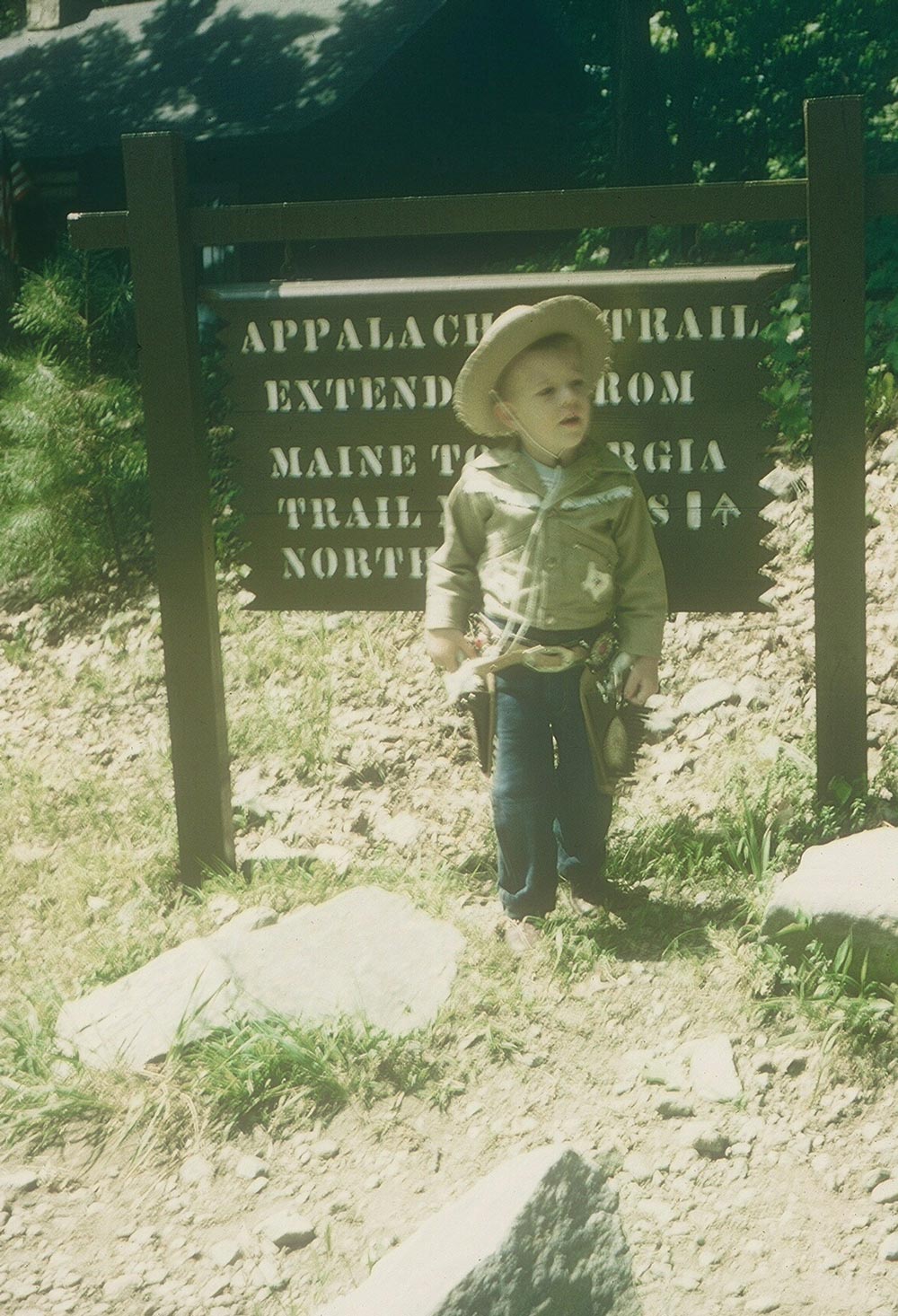
The author at Washington Monument State Park in 1958
Fall 2016 issue of A.T. Journeys, about a family who drove nine hours to walk a 1.3-mile section of the Appalachian Trail, I became introspective. I and thousands of others with the A.T. in their proverbial back yards don’t know how lucky we are. Hikers come from hundreds or even thousands of miles, from across the U.S. and foreign countries, to seek the famous Trail while those of us who live relatively close at hand, or should I say foot, often take it for granted. I grew up and spent my entire life in close proximity to the Trail with very little thought about how special a place it really was. The article made me stop and think how much of my life has been influenced by — so much more than just a trail — the A.T.
My association with the A.T. began as far back as I can remember when my parents would take me picnicking, from our row-house in Baltimore, to places like Harpers Ferry, West Virginia and Washington Monument State Park in Maryland. Near Harpers Ferry, we would picnic at tables right along the road on the Virginia side of the Route 340 bridge over the Potomac River. At that time, the Trail crossed that same bridge and passed right in front of the picnic area before ascending Loudoun Heights on its way south. Neither the picnic tables nor the Trail are still present in that spot today.

Tiffany hiking at the ATC 2017 Conference in Maine
not a commonly used term, are those individuals who see opportunities for positive change and grab the brass ring to make things happen. At the Appalachian Trail Conservancy (ATC) we are so fortunate to have “Opportunity Makers” all around us. They are those individuals who donate their time, talent, and treasure to make our organization run smoothly all while protecting and maintaining the almost 2,200 miles of the Appalachian Trail. Our thousands of members, donors, and volunteers embody this mission as they come together to do something much bigger than any individual.
So, as we head into the autumn and early winter months, I ask you to consider what kind of Opportunity Maker are you, or will you become? This premise is much more than wealth, or titles, or lots of contacts—although we appreciate those things too. Creating opportunity is our capacity to connect around each other’s better side to bring out our charitable efforts. As I recently stepped into a new role as the ATC’s vice president of Membership and Development, I hope to further foster those behaviors that so many of you already do — to reimagine our fundraising so that we are constantly utilizing our best talents, resources, and time to accomplish even greater things together.
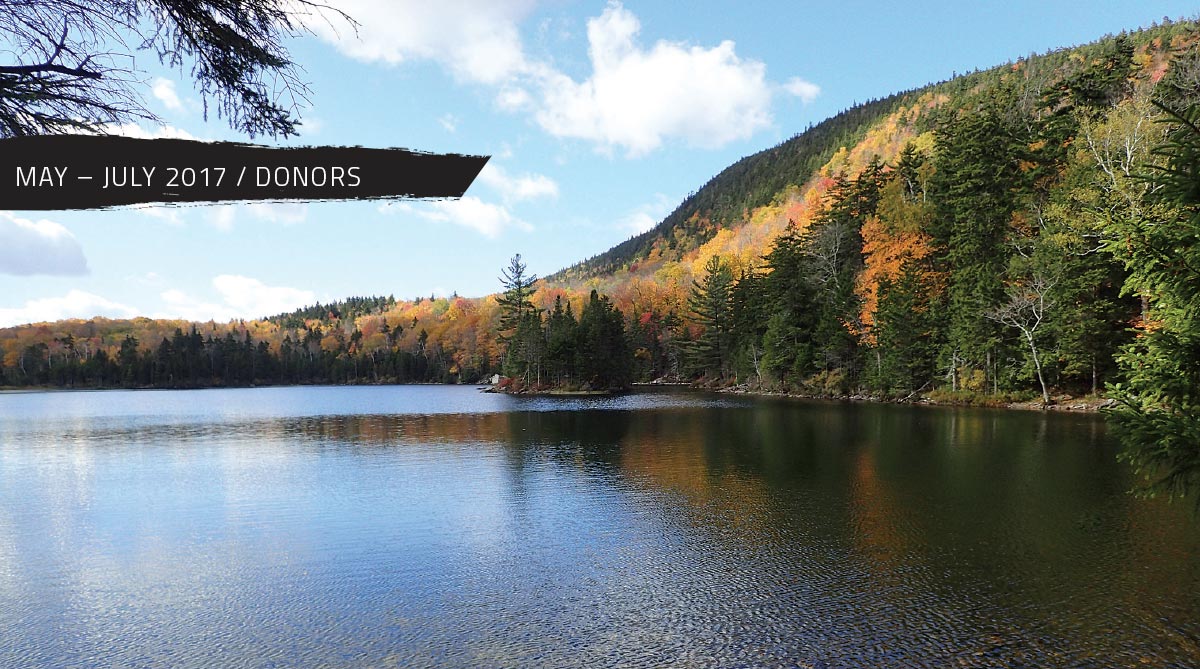
$100,000 – $499,000
Bruce Matson
$50,000 – $99,999
The Estate of Carl Thompson
Greg* & Jan Winchester
$25,000 – $49,999
Rubén* & Valerie Rosales
$10,000 – $24,999
Norman* & Adrienne Findley
Mary Higley* & Kyran Kennedy
Robert* & Catherine Hutchinson
Betsy* & Bob Thompson
$5,000 – $9,999
David W. Appel
Beth Bryan Critton*
Rich & Catharine Daileader
Arthur* & Denise Foley
Robert Hutchins
Sandra Marra* & Chris Brunton
Ann Satterthwaite
Nathaniel C. Stoddard*
$1,000 – $4,999
Anonymous
Donald^ & Anne Ayer
Greg & Ann Beckham
Hon. Donald & Megan Beyer
Ralph & Jennifer Blumenthal
Marilynn Borkowski
Lt. Col. Ann H. Bransford
Ron & Cathy Butler
John & Cecilia Carey
Plus Many More

About to be 77-years-young A.T. section hiker seeking other senior(s) who prefer slack packing or limited backpacking to hike in Pennsylvania and Vermont over the next two years. We used the two-car system. I’ve completed eight states and 1,475 AT miles. Let’s compare goals. Contact: [email protected].
Found: GPS system on Bigelow Mountain in Maine in early August. The finder will be glad to make arrangements to send to you if you contact me and identify it. Please contact: [email protected].
Found: Military watch at Bobblets Gap shelter in Virginia in September. Contact: (828) 883-9278 to identify.
AT Café in Millinocket, Maine. Successful restaurant located in the Trail town closest to the northern terminus of the Appalachian Trail. Millinocket is the gateway to Baxter State Park and the new Katahdin Woods and Waters National Monument. The opportunities for outdoor recreation are abundant in this spectacular outdoor recreational area. Featured in Backpacker and Downeast magazines including other noted publications. Building housing the restaurant includes three apartments for rental income/owner housing. All equipment included. Work 6 months and travel or operate year round. Please direct inquiries to: Jay Peavey Team, Realty of Maine; (207) 478-0084; [email protected].
For sale: prosperous hiker hostel located on the A.T. in Damascus, Virginia. Well-equipped and established. For information call Chuck at: (406) 407-1272 or [email protected].
Black Bear Resort, Hampton, Tennessee for sale – 4/10 of a mile off MM 418.5 – 2 Bunk houses, cabins, and cottages – 23 acres in mountains $599,000. Contact: (423) 725-5988; blackbearresorttn.com or [email protected].
Steve Johnson, aka “Fob,” has published Volume 2 of his book Sir Fob W. Pot’s Journey to Katahdin, detailing his 2016 A.T. thru-hike. It’s now available on Amazon. See his “Author Steve Johnson” Facebook page for photos, interviews, and more details.
Public Notices may be edited for clarity and length.
![]()
[email protected]
Public Notices
P.O. Box 807
Harpers Ferry, WV 25425-0807
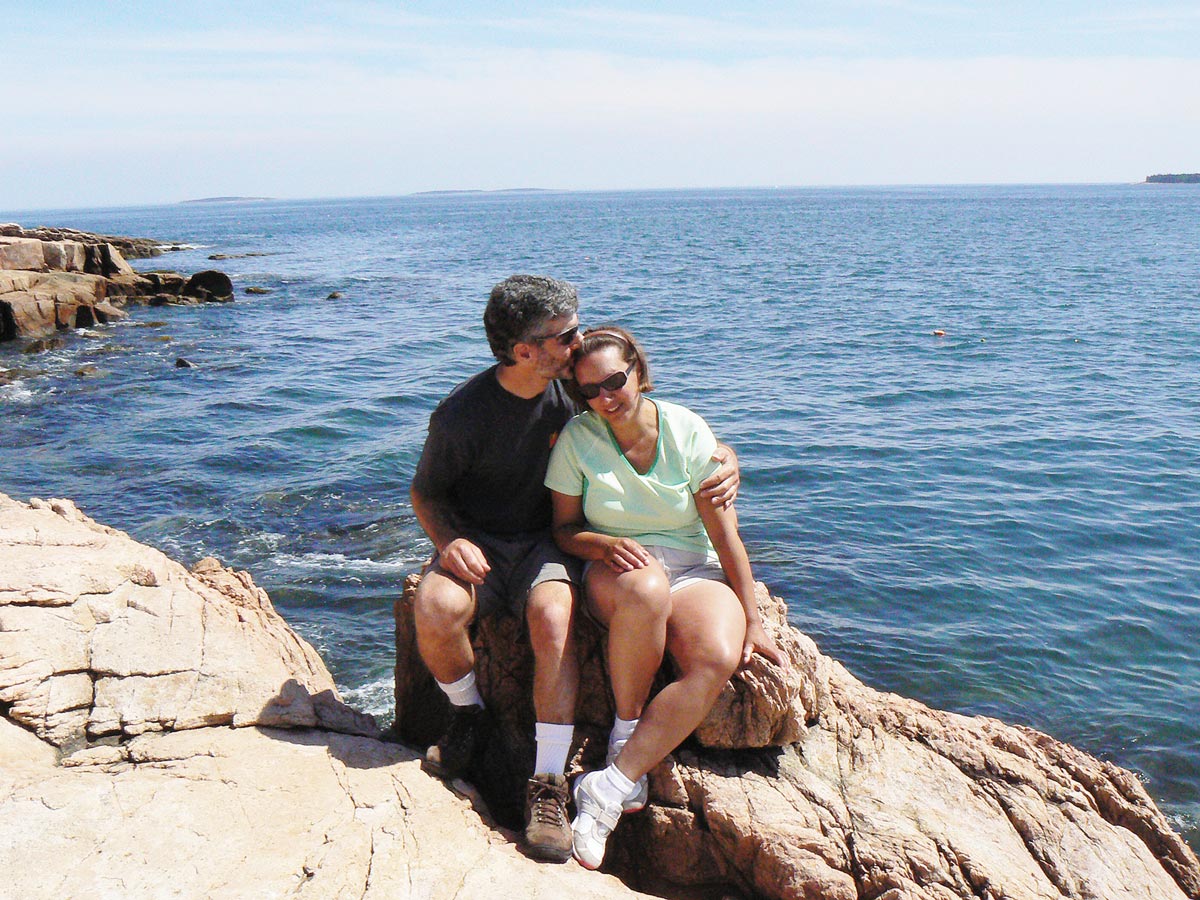
Doug and Stacey at Acadia National Park in Main
wife, soulmate, and best friend Stacey was first diagnosed with cancer, we never asked about the prognosis. We focused only on the diagnosis, our treatment options, and additional steps to improve overall health. As a result, when we had the rare chance to move where we wished four years after Stacey’s breast cancer had first spread to her liver and lungs, (Stage four) we had no idea that based on the numbers, her survival at that moment was already unlikely. Bound by the averages, we may have never seized the opportunity to find a simpler and more active life.
It started innocently enough, with the Google search: “Where should I move?” followed by an anonymous survey that narrowed the choice to 25 towns. We already knew the region where we hoped to settle and after visiting about a half-dozen towns on the list found only one of interest. That town was Abingdon, Virginia. While this was happening, Stacey had two people from entirely different social circles recommend the book Animal, Vegetable, Miracle by Barbara Kingsolver. I don’t think she had ever received even one book recommendation from anyone, let alone two in one week for the same book. She read it and then excitedly told me to read it too. In short, the book describes the simpler life we sought, and at the very end the author thanks everyone at the Abingdon Farmers Market. We were never strong believers in faith or fate but as far as we were concerned, all roads led to Abingdon.



